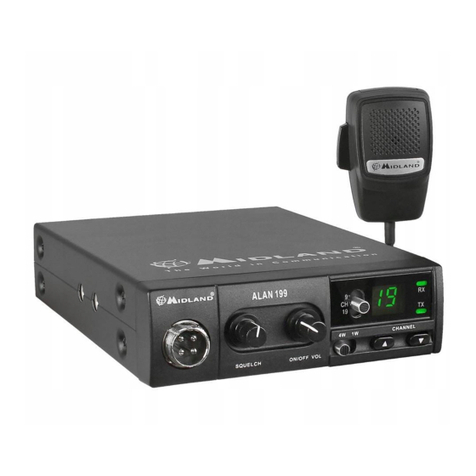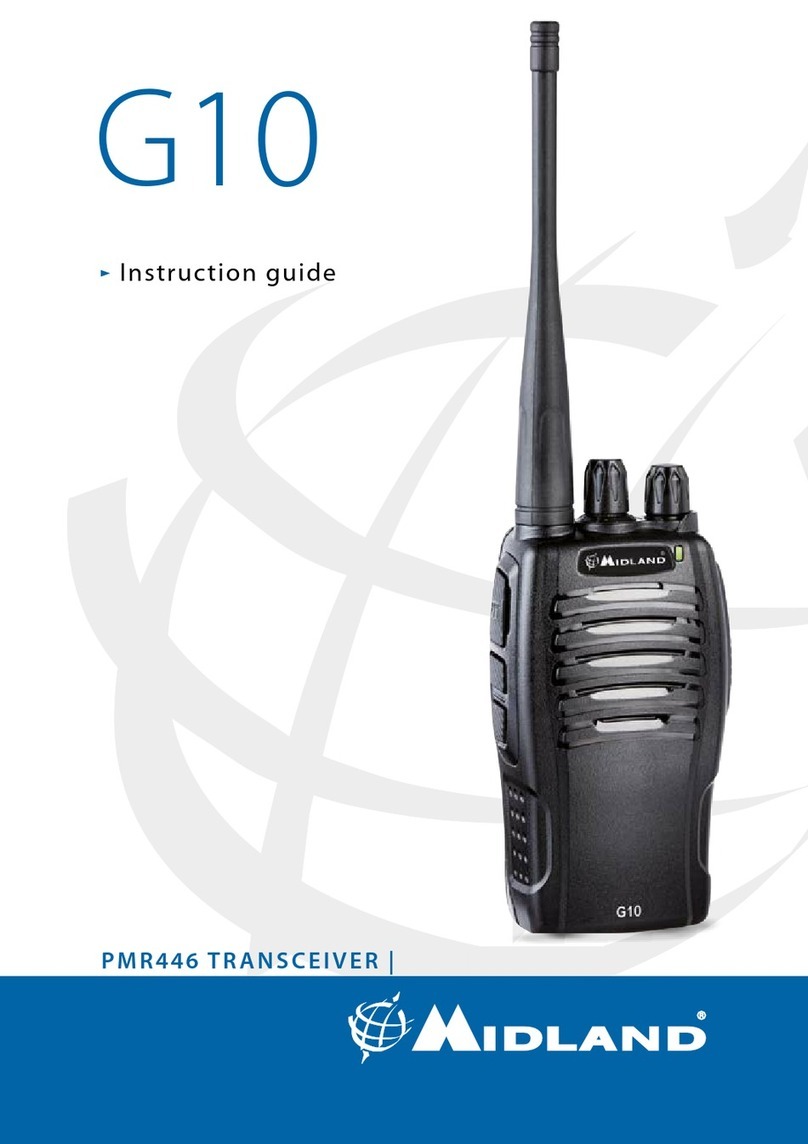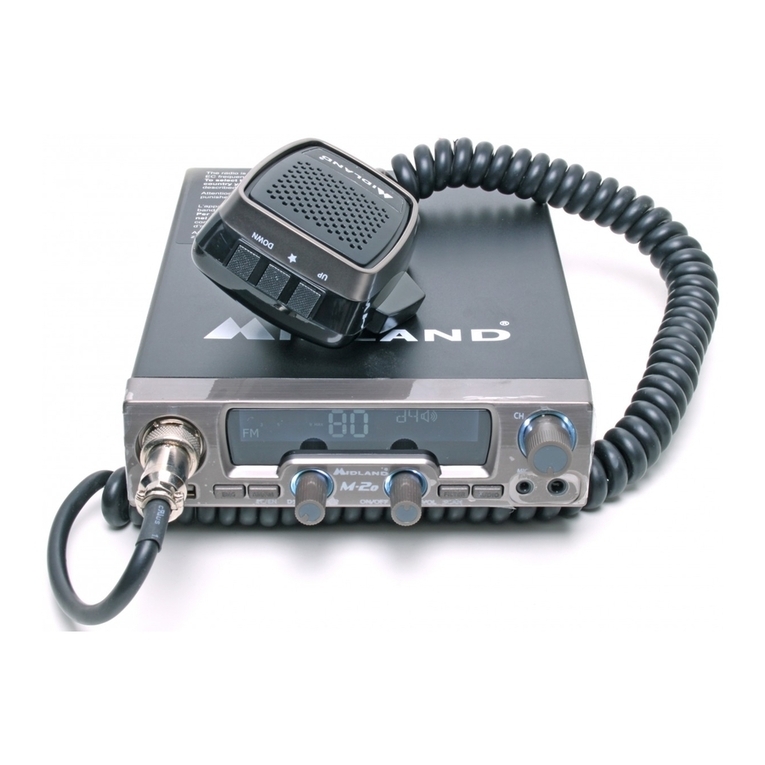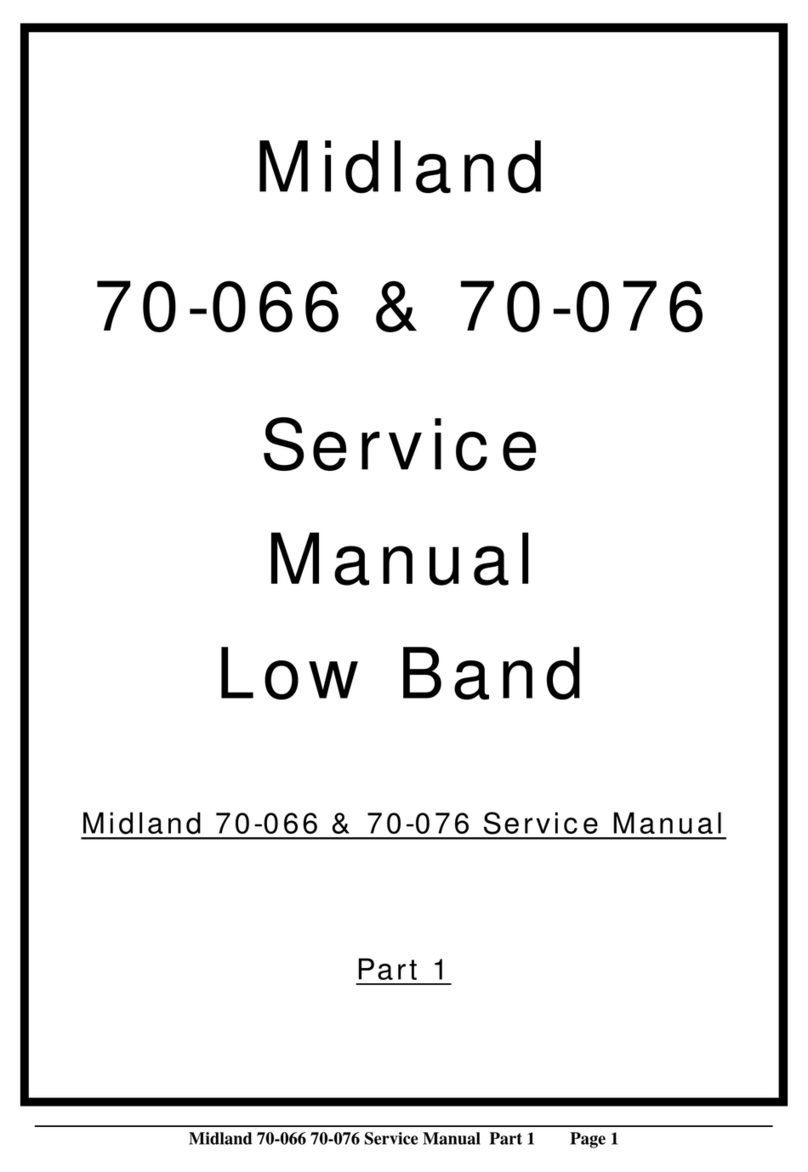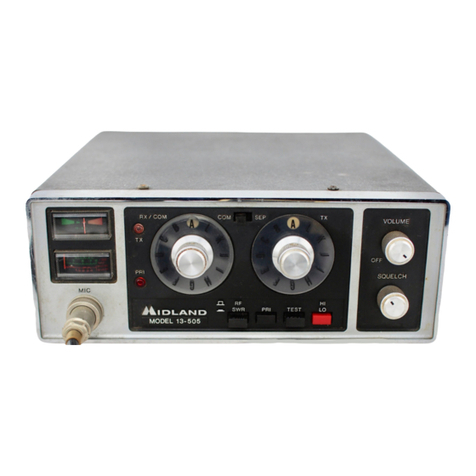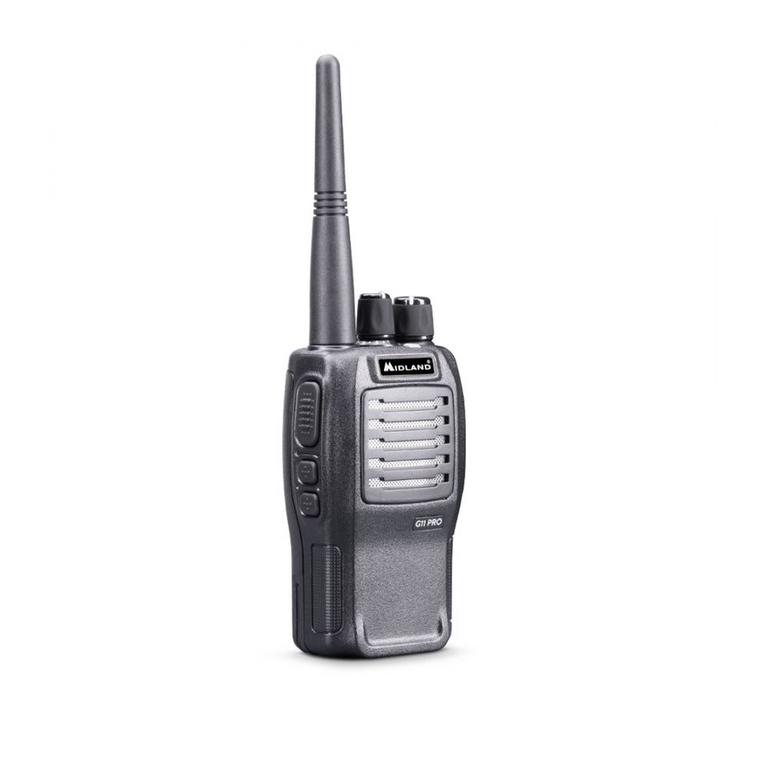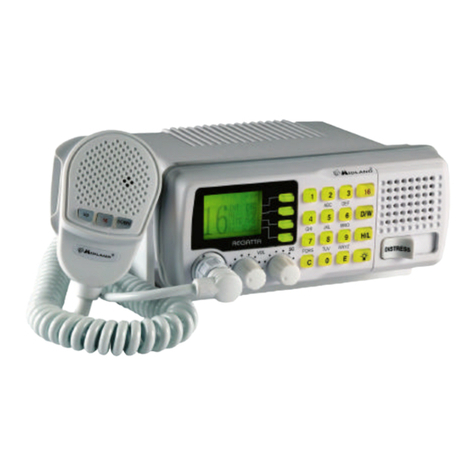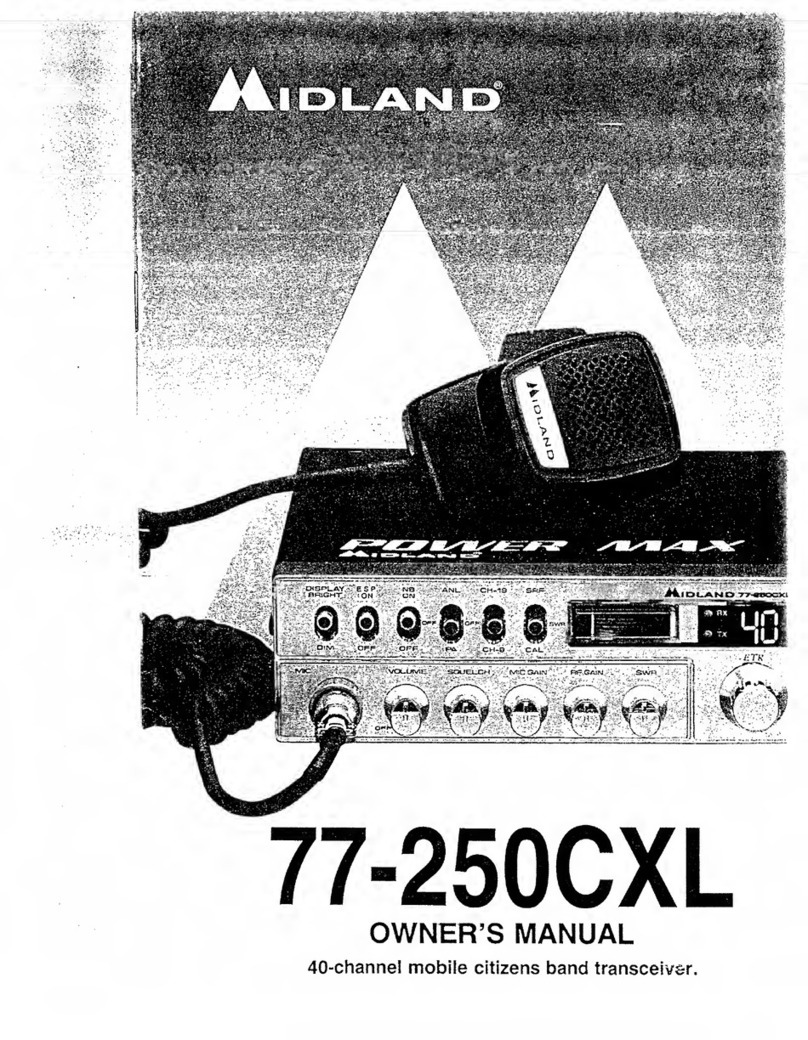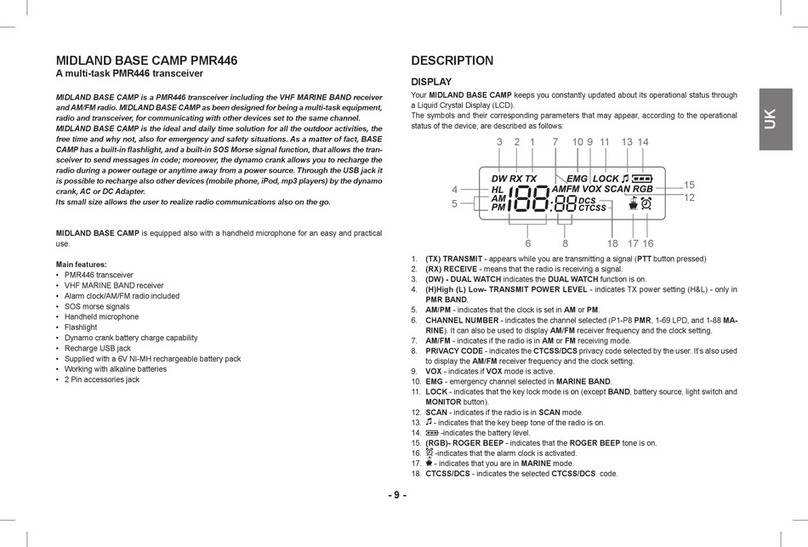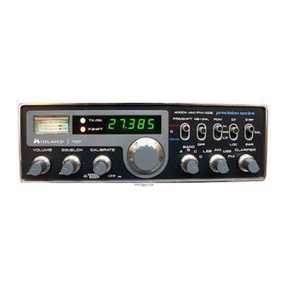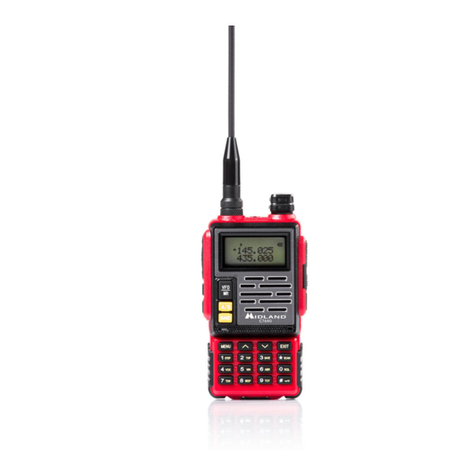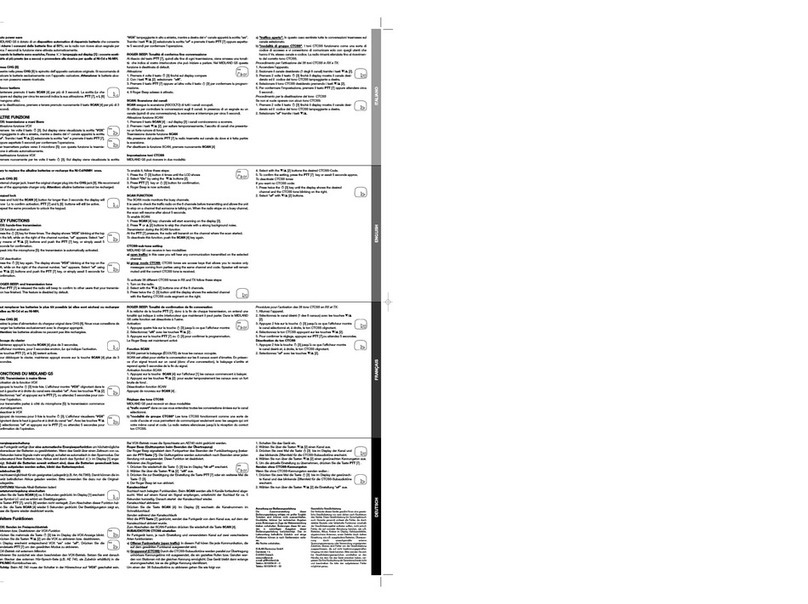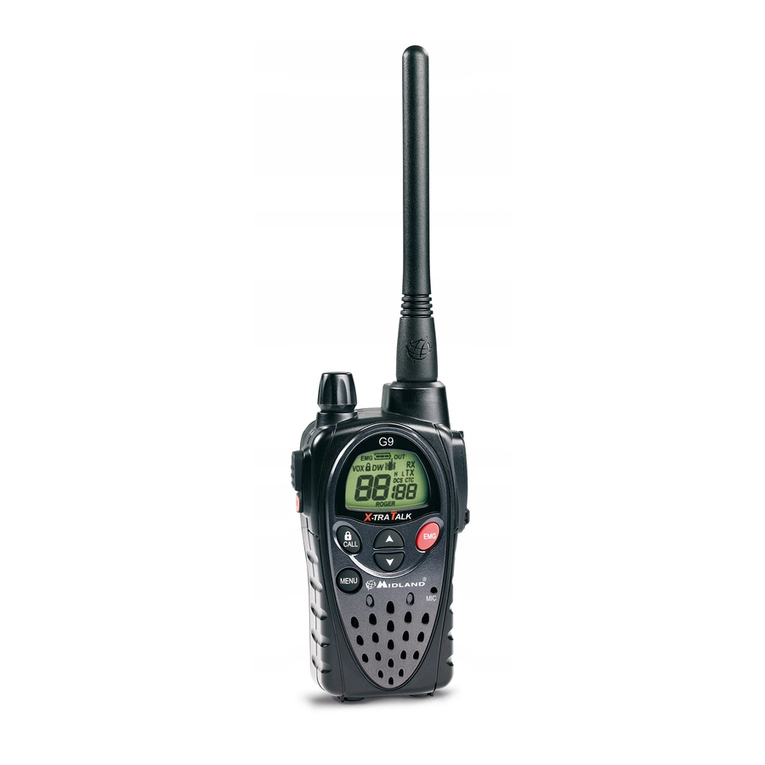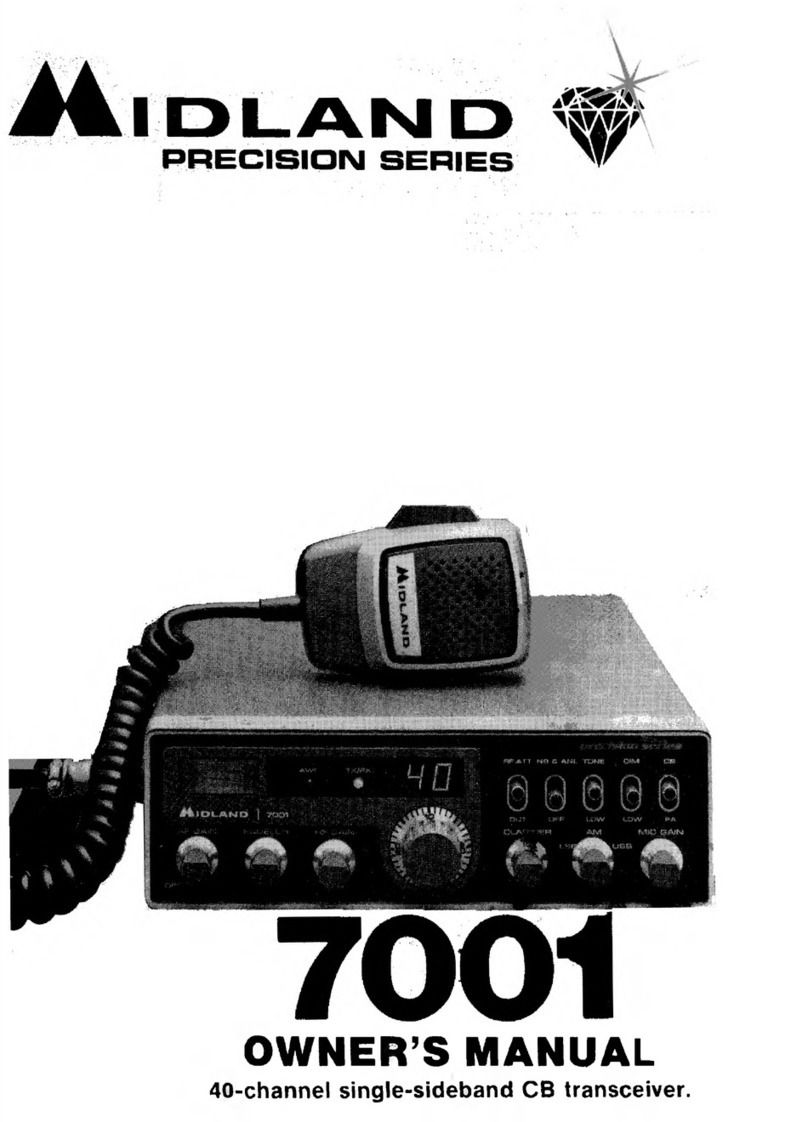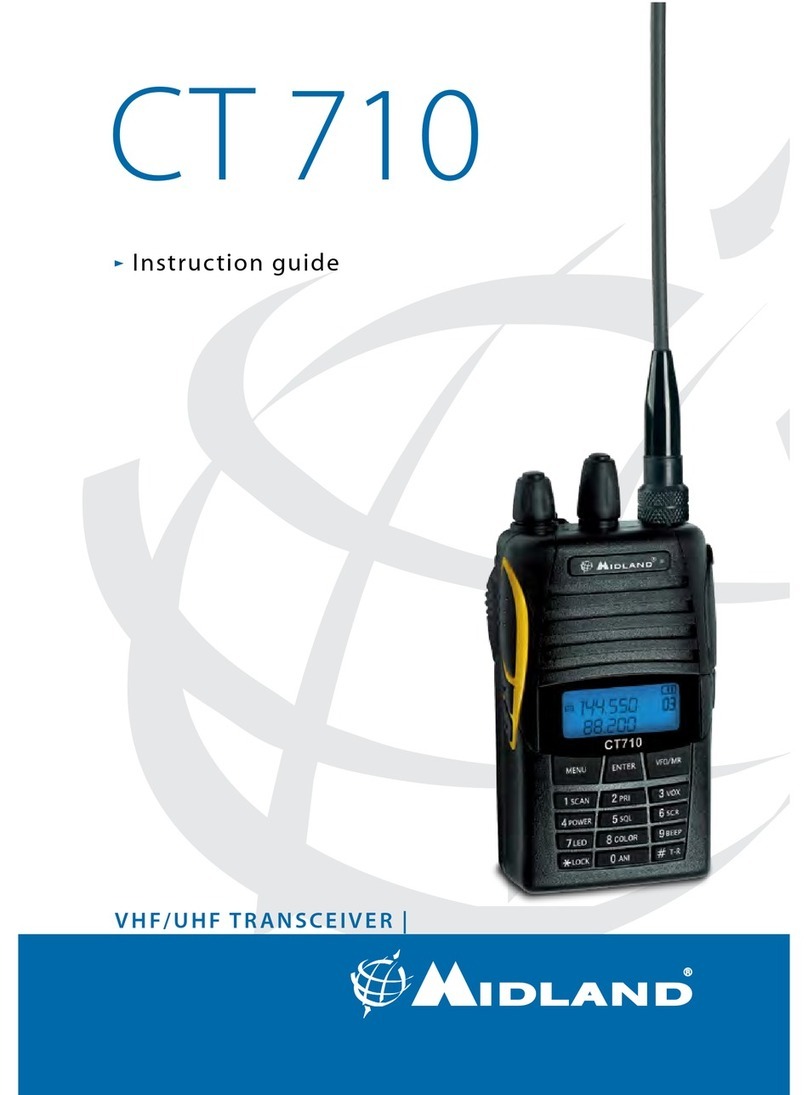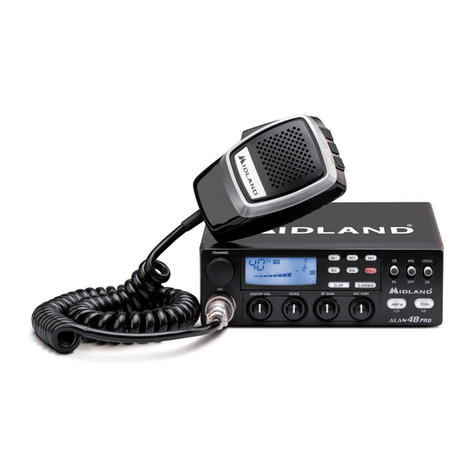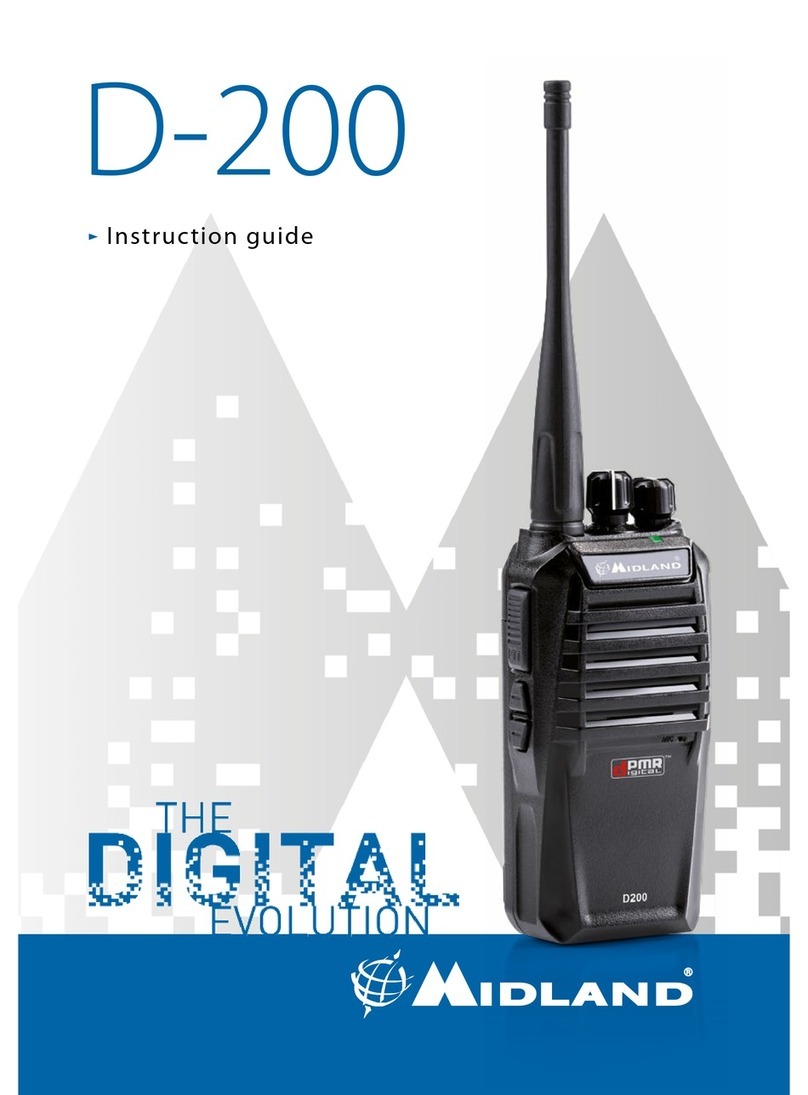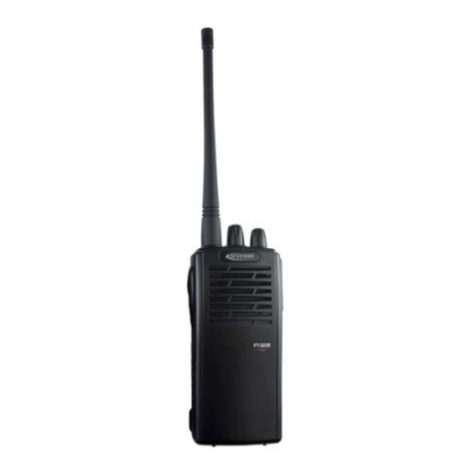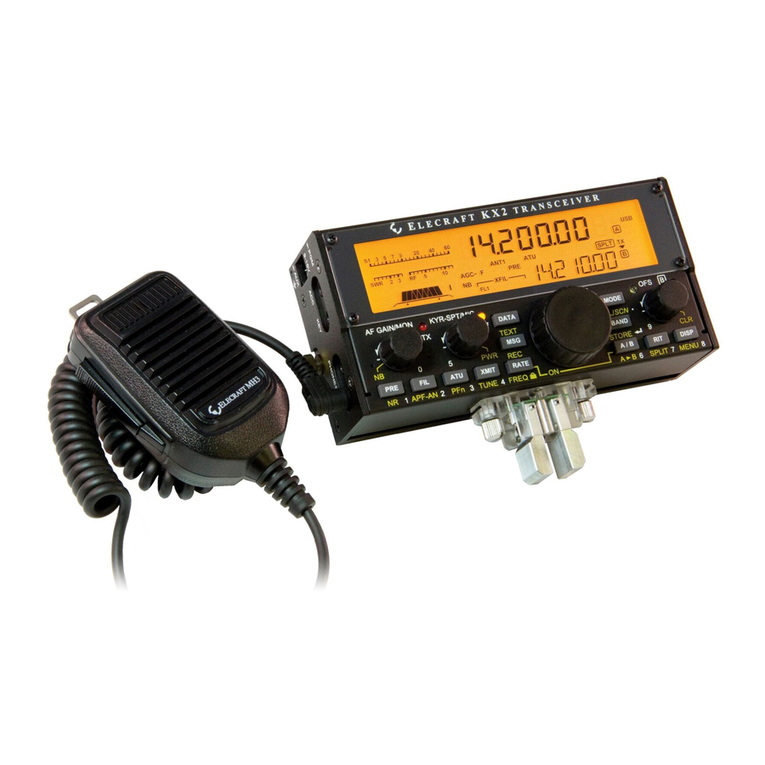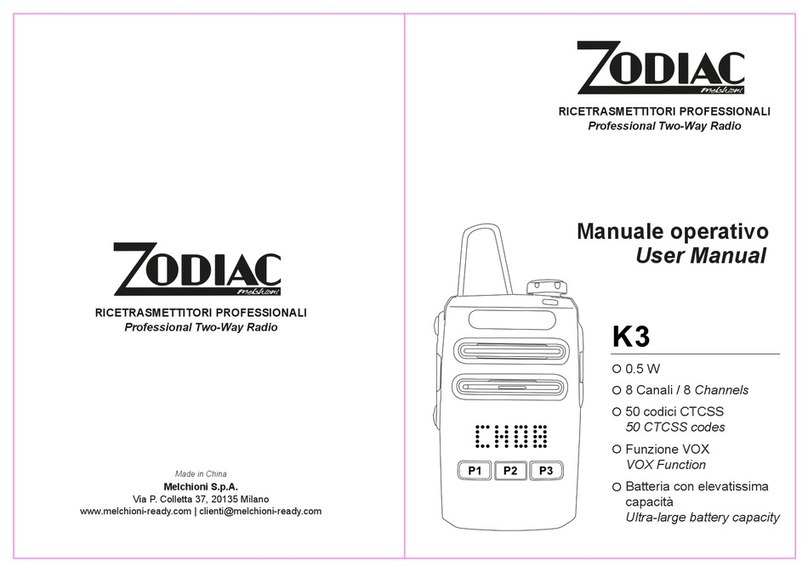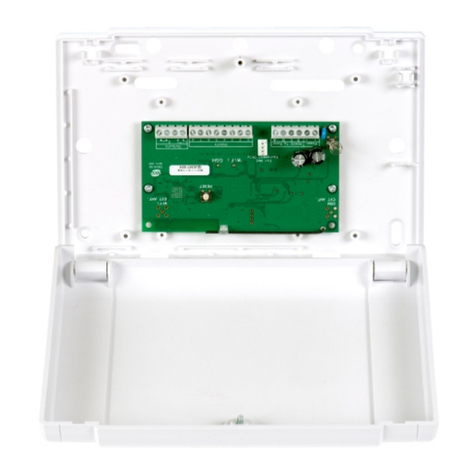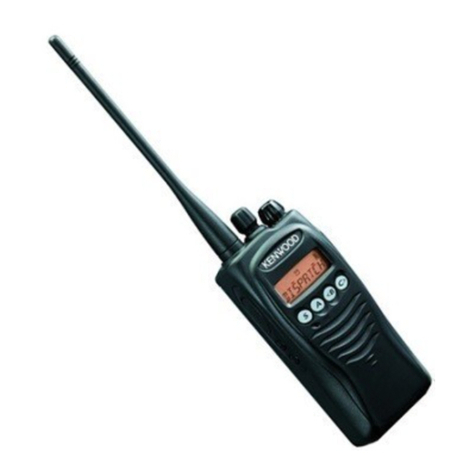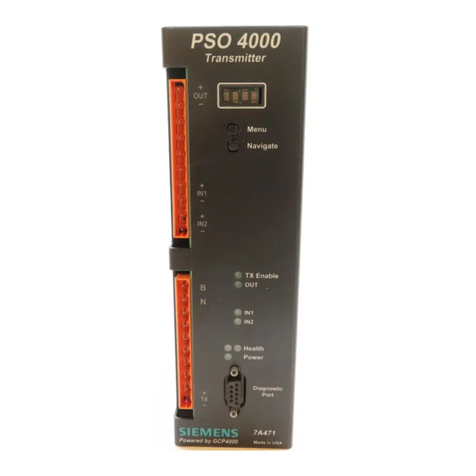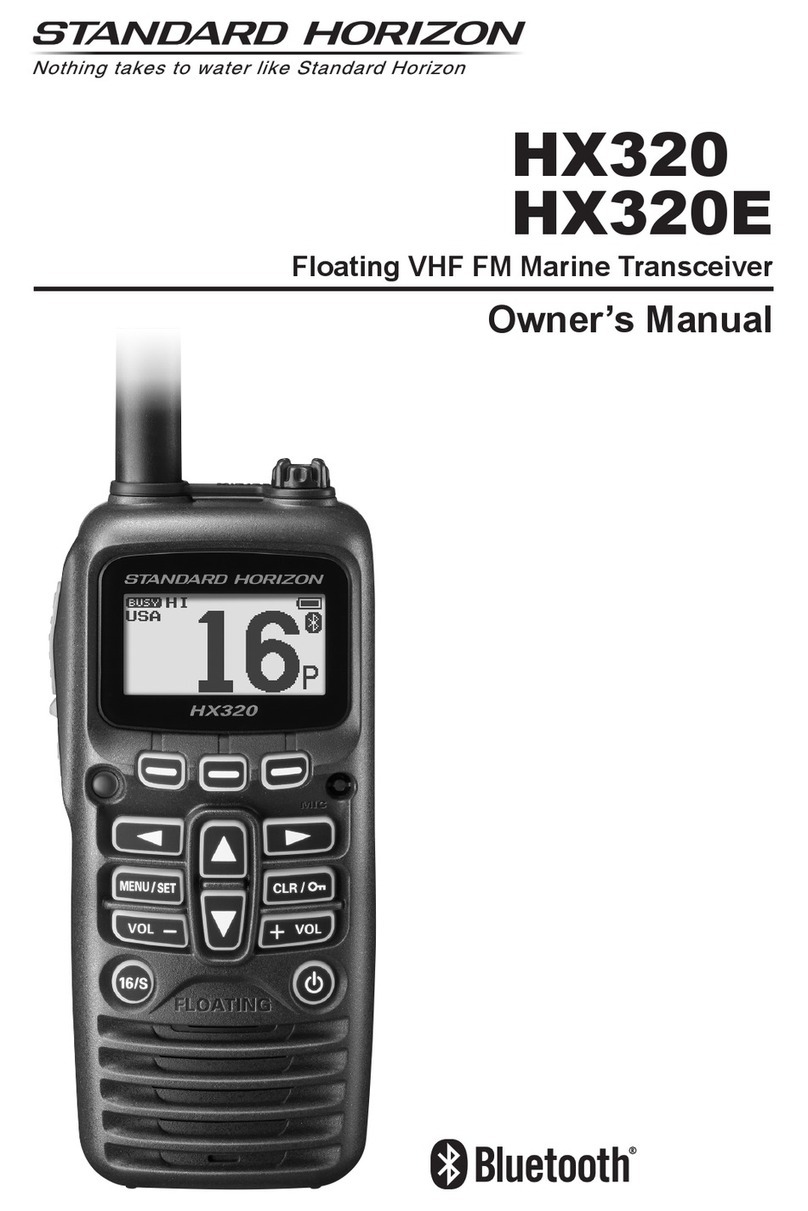Keypad Beep
Everytime a button is pressed, you will hear a beep.
To disable the beeps, follow this procedure:
Press › MENU, till the display shows “bP on”.
Push ▲▼ till “› bP of” is displayed.
Conrm your selection by pushing › PTT or wait for 5 seconds.
In this way, all beeps and tones are disabled.
To enable the keypad beep, repeat this procedure and select “bP on”
Emergency CALL function
The Midland G8 dedicates a channel to the Emergency calls: all the G8 operating within your range, even if tuned
on different channels, can receive/transmit Emergency messages on that channel.
If you keep pressed the EMG button, the communications automatically switch to the emergency channel (“EC”
on the display). An audio signal will be sent and all the G8 operating within the range will automatically go to the
Emergency channel (“EC”).
If you have disabled this function, you won’t receive/transmit any Emergency CALL.
! When the radio is operating on the Emergency channel (EC displayed), all the buttons except PTT and
CALL are disabled.
The G8 will return to the channel in use after one minute from the last transmission.
To return immediately, push EMG. Now you can use all the MENU functions.
Activating / Deactiving the Emergency feature
When you switch on the unit, the Emergency function is activated, but you can disable and enable it again:
Press MENU till the display shows EC on.
Select EC of by using ▲▼ . Conrm your selection by pushing PTT or wait for 5 seconds.
! When the Emergency function is activated (EMG blinking on the display) the following functions
cannot be used: Scan, Monitor, Dual Watch, Out of Range.
Changing the emergency channel
The emergency channel originally preset is P8 DCS 50; but you can change it according to your needs.
! Important: be sure that the Emergency function is active! (EMG blinking). If you decide to change
the channel dedicated to the Emergency function, do not forget to make the same change to all the
radios!
Press the MENU button until the display shows EC on.
Push MENU again (of displayed) and select the desired channel by means of ▲▼. To conrm press PTT or wait
for 5 seconds.
! Important: be sure that the Emergency function is active! (EMG blinking).
If you decide to change the channel dedicated to the Emergency function, do not forget to make the
same change to all the radios!
To set again the original Emergency channel (P8 DCS 50)
Press the MENU button until the display shows EC on.
Push MENU again and select of
To conrm press PTT or wait for 5 seconds.
! If you dedicate any of the standard channels to the Emergency function, remember to use it only for
this purpose, otherwise you will cause interferences.
Manual Out of range function
This function allows you to know if there are any radios within your range.
By pushing EMG twice, you will send a request of acknowledge to the other G8 operating within your range and
tuned on the same channel.
If any radio replies, it means that it’s within your range and you will receive an audio tone for conrmation.
! This function can be used only if the “Automatic Out of Range” feature is not active.
